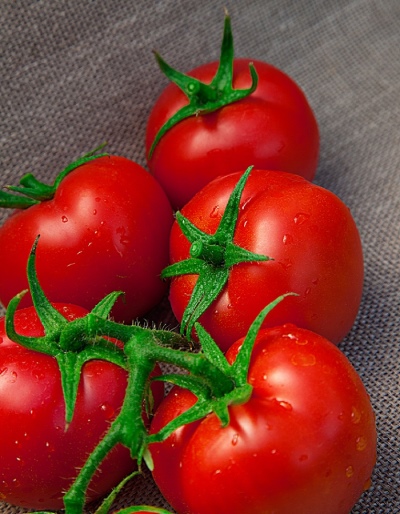
- Authors: Kudryashov Andrey Vasilievich, LLC 'Your economy'
- Year of approval: 2013
- Category: hybrid
- Growth type: determinant
- Appointment: fresh consumption
- Ripening period: early
- Ripening time, days: 85-90
- Growing conditions: for open ground, for film greenhouses
- Bush height, cm: 65-75
- Bush characteristic: compact
Tomato Bistrenok can charm people with its name - but not only with it, but also with other valuable properties. This culture must, however, be studied as thoroughly and diligently as possible. Only under this condition can serious success and the absence of problems in the course of field work be guaranteed.
Breeding history
The plant was created in LLC "Your economy". The breeding project was headed by A.V. Kudryashov. The main work was completed by 2013. It was then that official permission was issued to grow such tomatoes in the gardens.
Description of the variety
Swift is a determinant hybrid. Its cultivation is recommended for both open gardens and greenhouses covered with foil. Bushes grow up to 65-75 cm. Compact development is typical for them. The light green foliage of Bistrenka is large.
The main qualities of the fruit
The berries of this variety, when they first appeared and have not yet had time to ripen, have a light green color. A spot near the base is not formed. Fully ripe tomatoes, as expected in most cases, acquire a red color. The average weight of one specimen is 135-140 g. The shape of a flat circle is typical for them.
The ribs are relatively weak. An attractive smooth skin is noted. The fruits of Bistrenok will form on inflorescences of a simple type. Their peduncles have a characteristic articulation.
Taste characteristics
Farmers note the very attractive taste of this variety. Its pulp is tender. Moreover, it is quite dense.
Ripening and fruiting
Bistrenok is a classic early variety. It is able to ripen in 85-90 days after the formation of the first green shoots. You will need to harvest in July and August. Fruiting is amicable. For some farmers, this property is positive, while for others it is negative, and you need to think carefully about everything when making a decision.
Yield
The number of fruits can be quite large. The declared ability to produce 13.7-14.5 kg of berries per 1 sq. m. Such a small spread means, among other things, the stability of the yields. However, this does not mean that the quality of agricultural technology can be simply ignored.
The timing of planting seedlings and planting in the ground
Sowing seeds in relatively southern regions is possible in April. When cultivating in areas with more severe climates, it is necessary to postpone this until May. The specific period is required to be selected independently, taking into account the horticultural experience. But you will also have to take into account the readiness of the seedlings themselves and the actual weather. Normally, the seedlings will be ready for planting in open ground at the age of 50 days.

Growing tomato seedlings is an extremely important process, because it largely depends on whether the gardener will be able to harvest at all. All aspects must be taken into account, from seedbed preparation to planting in the ground.
Landing scheme
In the official description, it is recommended to plant the bushes according to the 700x400 mm system.

Growing and care
Without a garter and shaping, Bistrenok will not demonstrate his attractive qualities. Overloading is normal for this variety. Even with a short-term deterioration in the weather, the formation of ovaries is almost not disturbed. It is necessary to dive seedlings in the phase of 2 true leaves. Sowing in February for seedlings is possible only when it will be possible to organize serious additional lighting.
In the last 14 days before planting, it is advisable to harden the seedlings. In the beds and in greenhouses, planting will definitely have to be shaded. Watering should be done every 7-10 days. In this case, it should be monitored so that the soil gets wet qualitatively. It is required to carry out the step-by-step activity in the morning so that the wounds can heal during daylight hours.




A plant needs different micronutrients at each stage of growth. All fertilizers can be divided into two groups: mineral and organic. Folk remedies are often used: iodine, yeast, bird droppings, eggshells.
It is important to observe the rate and period of feeding. This also applies to folk remedies and organic fertilizers.
Disease and pest resistance
Such a tomato can successfully resist:
verticillosis;
fusarium wilting;
tobacco mosaic.


Growing regions
The plant is zoned for cultivation:
on the Lower and Middle Volga;
in the Far East;
in the Ural and Siberian regions;
for the center, north and south of the European part of Russia;
for the Caucasian territories and republics.

























































































